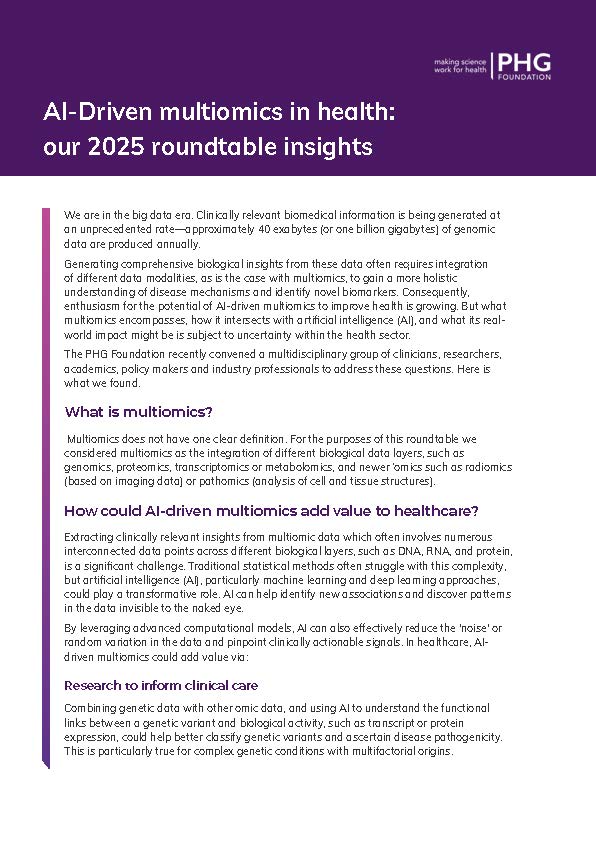We’re living in the era of big data and it’s opening doors for AI-driven multiomics and health. Biomedical information is being generated extremely quickly. Approximately 40 exabytes (or one billion gigabytes) of genomic data are generated every year.
The use of multi-modal data – of which multiomics is a subset – could help researchers build a more complete picture of how diseases work and uncover new biomarkers. This is where multiomics and AI intersect.
While there’s a lot of excitement, there’s still confusion about what multiomics really means. How does AI fit into it? What impact could it have in real-world healthcare? These are some of the questions we asked multidisciplinary group of clinicians, researchers, academics, policy makers and industry professionals in a roundtable discussion.
Our briefing, AI-driven multiomics in health: our 2025 roundtable insights, sets out the main themes and questions arising from the roundtable discussion.
Putting AI-driven multiomics into practice
Right now, AI-driven multiomics is still early-stage and mostly happening in research labs. Noteable progress has been seen in cancer, with promising developments also emerging in rare diseases, infectious diseases, and autoimmune conditions.
This is an ongoing topic of engagement for us. We want to better understand AI-driven multiomics, and how it could transform research and healthcare. As multiomics evolves, we want to explore the scientific, technical, and societal implications.
Read: AI-driven multiomics in health: our 2025 roundtable insights
We’re keen to hear from others who are exploring similar questions or who have insights to share. If you’re working in this space — or just interested in where it’s headed — we’d welcome your thoughts, perspectives, or collaborations. Contact us as [email protected].

